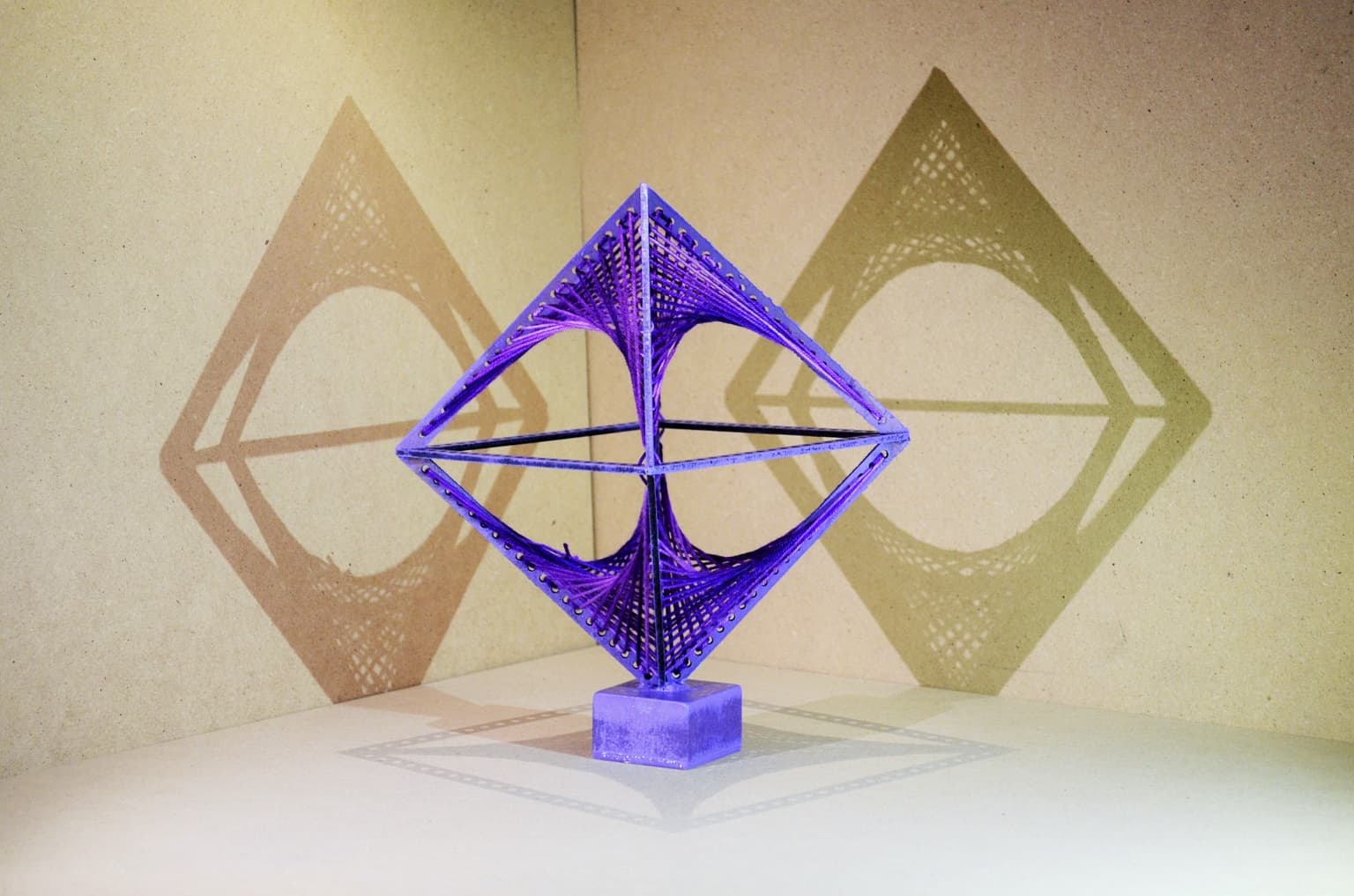Iva Kodrnja & Helena Koncul
Artists
Iva Kodrnja & Helena Koncul
Post-doc
Faculty of Civil Engineering, University of Zagreb
Zagreb, Croatia
Statement
Mathematics, geometry is art – shape, structure, form, relations, quantities, measures, order, regularity, rules and exceptions. Aesthetics – how to calculate the pleasurable, how to measure the appealing – can we avoid mathematics? Are mathematical constructions science or art? Where is the borderline? Art is craft – revival of the abstract. From ideas to material objects. Art is an expression of our knowledge, understanding and awareness.
Artworks

Hypercube On Point
60 x 56 x 56 cm
Laser-cut cardboard, wooden tile, glue, spray paint and knitting yarn
2019
In this portrayal of a tesseract, the inner cube is replaced by its Platonic dual – an octahedron. Edges of its base square are connected to skew edges of the outer cube by strings which, looking at each pair of connected edges, geometrically define one system of rulings of a hyperbolic paraboloid.
The inspiration for this piece are old string models, used and created for scientific and educational purposes of studying ruled surfaces in the 19th century. Models of this kind can be found in the majority of technical universities throughout the world, and today, with the help of modern technologies such as CNC machines and CAD software, digital production of similar models can be and still is an excellent educational tool.

Octahedron & 8 Parabolae
25 x 22 x 22 cm
Laser-cut MDF board, wooden tile, glue, spray paint and knitting yarn
2019
Dual to the Steiner construction of conics, by taking two intersecting lines we can construct a number of tangents of a parabola.
This simple construction is knitted inside 8 faces of an octahedron.
We believe that the octahedron (Gr. ὀκτώ, eight + ἕδρα, face of a polyhedra) has the ideal amount of complexity and an extraordinary structure consisting of two pyramids. Playing freely with etymology, we could come to the following; Pyramid (Gr. πυρ , fire + amid - En. in the center of) can be understood as fire in the center, which is, again in our opinion, the best possible translation, since the word itself has a pre-ancient root in old Egyptian, and its common meaning refers to their famous ever-intriguing buildings